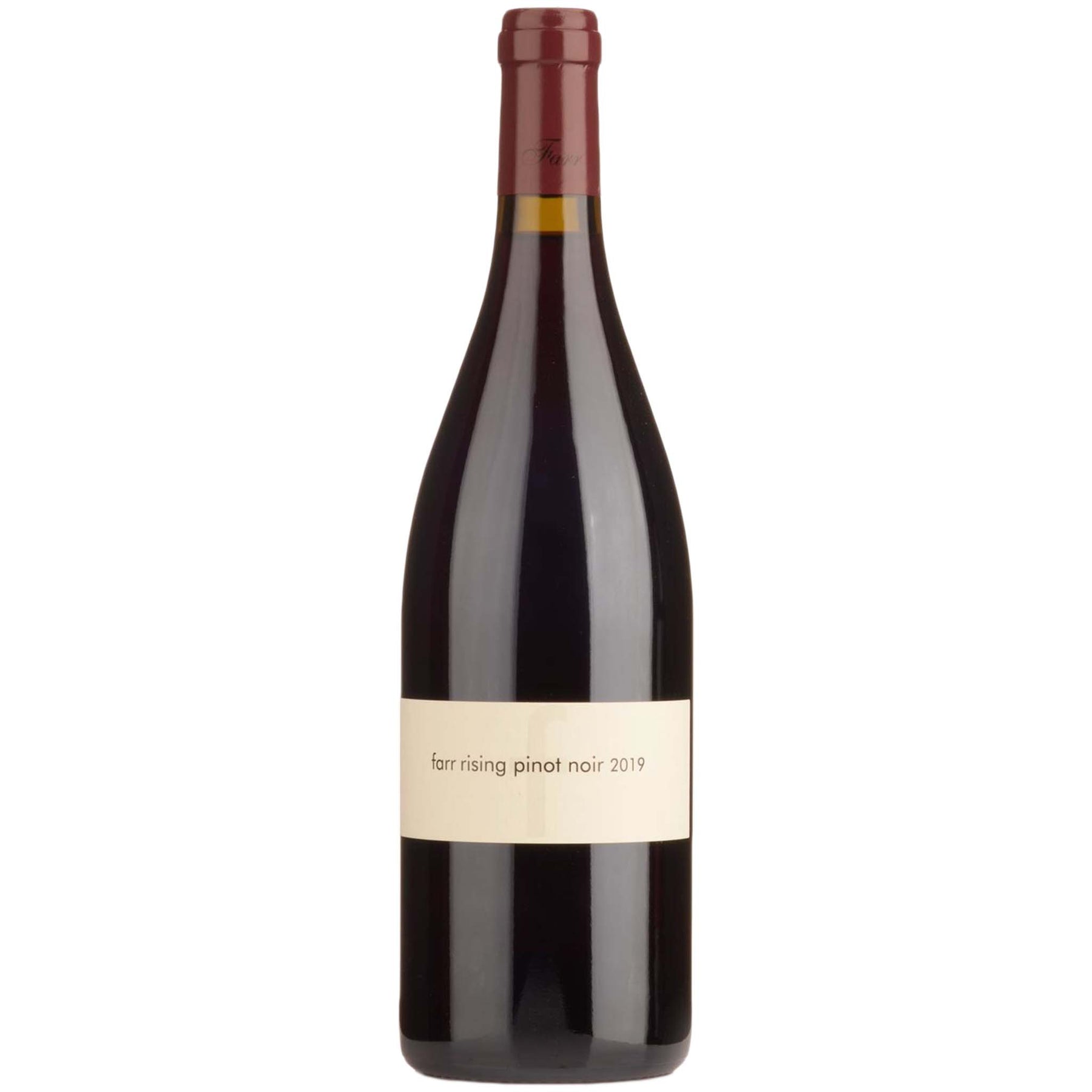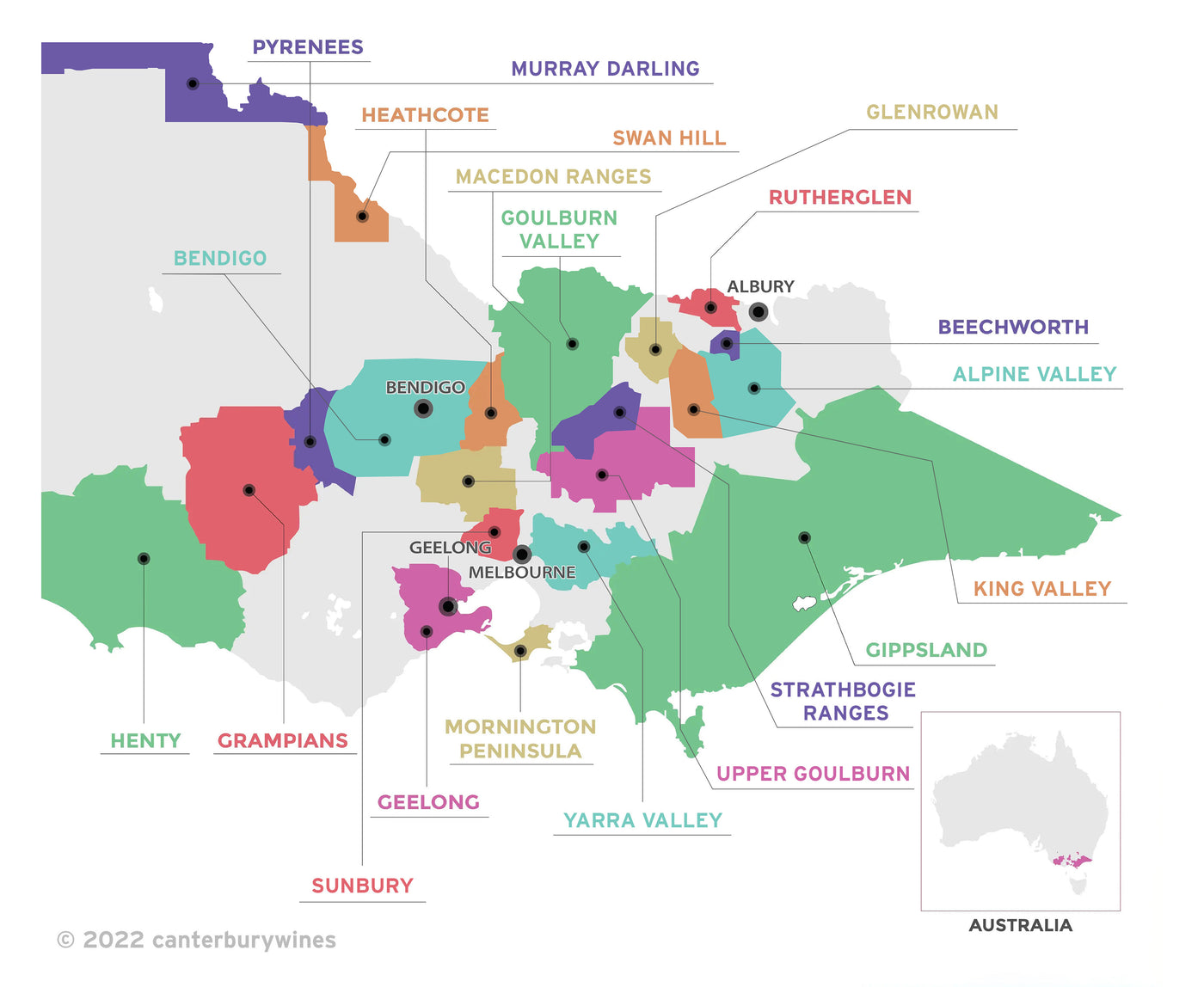
Farr Rising Pinot Noir 2019
Style: Red Wine
Closure: Cork
Farr Rising Pinot Noir 2019
Warehouse
34 Redland Drive
Vermont VIC 3133
Australia
Critic Score: Not Rated
Alcohol: 13.5%
Size: 750 ml
Drink by: 2027
Nick Farr began his apprenticeship under his father, the redoubtable Gary Farr. Life is never easy for the son of a famous winemaker, but Nick's career has flourished and in 2020 he was named Gourmet Traveller Wine Winemaker of the Year, having been previously nominated back in 2013. The baton has been passed and he has taken over the reins of winemaking at By Farr from Gary. In addition, he introduced the Farr Rising range of wines when he planted The Farr Rising Vineyard in 2001 - planting a little more than 1ha of pinot noir (clones 114 and 115) and a little less of chardonnay (clones P58 and I10V1).
The Farr Rising Pinot Noir typically shows a soft perfumed nose, which begins to build. The palate has sweetness, followed by mineral overtones enhanced by toasty oak, and firm flavours with a long and savoury finish. This is a gem of a wine, with ageing potential of five to eight years from most vintages.
"The Farr Rising pinot vineyard was planted in 2001 using a large mixture of rootstocks, but only three clones—MV6, 114 and 115. It is a very exposed and hungry north-facing slope, consisting of grey sandy loam mixed with an ironstone pebble (buckshot) at the top. This leads into black volcanic soil over limestone at the bottom of the vineyard. The fruit is hand harvested, and then sorted in the vineyard.
The fruit is fermented in an open-top fermenter, and an average 60 to 70 per cent of it is destemmed. The wine is placed in 20 to 30 per cent new Allier barrels by gravity. It is racked by gas after secondary fermentation, then again at 18 months to be bottled. Over time, the site has shown that it can certainly stand up to its bigger brothers." Nick Farr
About the winery

Nick Farr began his apprenticeship under his father, the redoubtable Gary Farr. Life is never easy for the son of a famous winemaker, but Nick's career has flourished and in 2020 he was named Gourmet Traveller Wine Winemaker of the Year, having been previously nominated back in 2013. The baton has been passed and he has taken over the reins of winemaking at By Farr from Gary. In addition, he introduced the Farr Rising range of wines when he planted The Farr Rising Vineyard in 2001 - planting a little more than 1ha of pinot noir (clones 114 and 115) and a little less of chardonnay (clones P58 and I10V1).
"History is littered with the metaphorical corpses of sons who have sought to follow careers similar to those of their fathers. (Mothers and daughters seem better able to deal with the problems.) So when son Nick Farr decided he, too, would be a winemaker, some observers were heard expressing sympathies or doubts. They needn't have bothered: whatever doubts Nick might have shared are well behind him. His Farr Rising brand has well and truly arrived and sits comfortably alongside his father's By Farr label.
It is inevitable but very sensible that Nick should have followed in some of his father's footsteps. In 1983, Gary and I arrived at France's Domaine Dujac in Morey St Denis, Burgundy, to work the vintage. Neither of us knew the other was going and it was the first French vintage for both of us.
Gary returned year after year, becoming part of the Seysses family (the owners of Dujac), but my legal career still had five years to run, so I couldn't. We both brought back to Australia invaluable knowledge about the growing and making of pinot noir.
Nick has in turn worked several vintages at Domaine Dujac, one of them being, in his words, 'the fantastic and relatively simple-to-make 2005 vintage, a real eye-opener to lazy winemaking in the great years'. Don't take this the wrong way: a more politically correct expression would be that the winemaker's role in great vintages is that of a quality control officer, whose task is simply to protect all the attributes nature has provided.
He had already established Farr Rising in 2001, planting a little more than 1ha of pinot noir (clones 114 and 115) and a little less of chardonnay (clones P58 and I10V1). He has also bought chardonnay (clone P58) and pinot noir (clone MV6), planted in 1984 by Innisfail, where Nick was making wine before moving to a shared winery with Gary in 2004.
Here they work together on the By Farr and Farr Rising wines, albeit with different views on chardonnay. The By Farr chardonnays have exceptional depth and complexity, although Gary has backed away from the baroque wines he made during his long tenure as winemaker at Bannockburn Vineyards.
Nick, by contrast, is aiming for a somewhat leaner, more elegant, minerally style that borrows from the model of chablis. Indigenous yeast fermentation in 30 per cent new French (Vosges) oak, malolactic fermentation, limited lees stirring and 11 months in barrel are the techniques used, coupled with increasingly early picking. By Farr picks the fruit when it is a little riper, uses 50 per cent new oak and does more lees stirring. Add different vineyards, resources and clones, and there are significant differences in style.
When it comes to pinot noir, the handling techniques in the winery differ only in one respect: Nick uses 40 per cent whole bunches, Gary 50 per cent to 80 per cent, in each case in the top of the fermenters, not (as is more common) in the bottom. Once again, indigenous yeasts are used and the wine spends a total of 15 to 16 days in the fermenter, with a very slow start to fermentation. It is matured in Allier oak and bottled after 18 to 20 months.
When it comes to the pinot noirs, the difference is largely due to the vineyard resources. Gary's vineyard was planted in 1994 at a density of 7000 vines a hectare (the same as adopted by Nick in 2001) or a spacing of 1.4m x 1m, which is ideal for dry-grown vines with relatively low vigour. The Innisfail plantings are on conventional spacing, about one-third of that of the family holdings. The clonal selection also differs significantly.
At the end of the day, the techniques, strongly influenced by those of Domaine Dujac, place a big stamp of elegance on the wines." James Halliday

Victoria
Victoria is home to more than 800 wineries across 21 wine regions. The regions are Alpine Valley, Beechworth, Bendigo, Geelong, Gippsland, Glenrowan, Goulburn Valley, Grampians, Heathcote, Henty, King Valley, Macedon Ranges, Mornington Peninsula, Murray Darling, Pyrenees, Rutherglen, Strathbogie Ranges, Sunbury, Swan Hill, Upper Goulburn and Yarra Valley.
Victoria's first vines were planted at Yering in the Yarra Valley in 1838. By 1868 over 3,000 acres had been planted in Victoria, establishing Victoria as the premier wine State of the day. Today, the original vineyards planted at Best's Wines are among the oldest and rarest pre-phylloxera plantings in the world.
Victoria's climate varies from hot and dry in the north to cool in the south and each wine region specialises in different varietals. For example, Rutherglen in the north is famous for its opulent Muscats and Topaque and bold reds, while the many cooler climate regions near Melbourne produce world class Chardonnay and pinot Noir. Victoria is truly a wine lover's playground.
